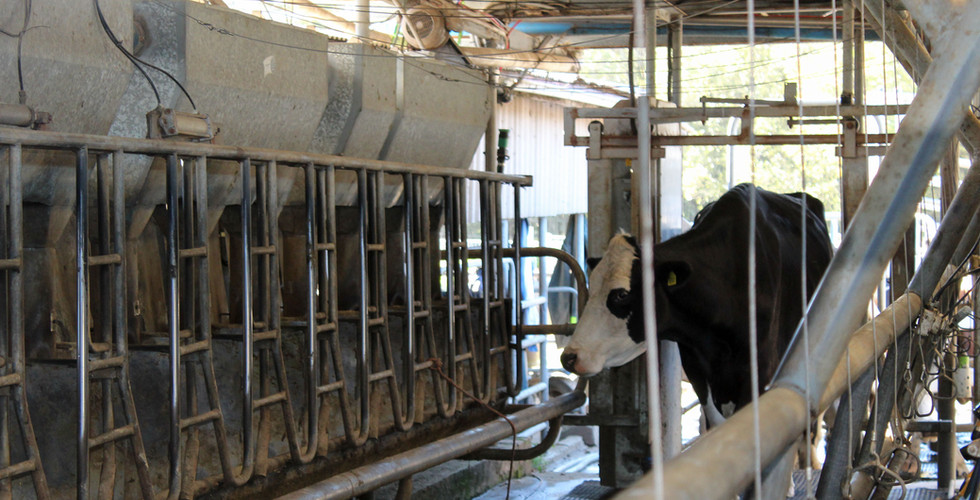From Farm to Table: Milk’s Journey — How Milk Is Produced, Processed and Delivered
- Deb Carr

- Aug 11, 2018
- 3 min read
Updated: Jan 8
This photo essay follows the journey of milk from farm to table, showing how dairy moves from the paddock through processing to the food we consume every day.

At the time of writing, NSW is in a severe drought at the moment, so I took some time to head on down to Coopernook to visit Farmers Own Dairy, suppliers of fresh milk to Woolworths. I met Julian the owner of the farm who took me on tour in the afternoon milking time, and I was soon to discover this is not an easy life, and it takes dedication and passion to be a dairy farmer, and any farmer really.
Farm to Table Journey
We folk just head on down to our supermarket and there's our milk already for us, but have you ever considered what is involved in getting that milk to your table? Well I'm about to tell you so please read on. By the way, I had the opportunity to attend the 3.00 a.m milking session but I politely declined that one on a freezing cold winter's morning. Milking is done at 3.00 a.m. and 3.00 p.m. every day.

The first thing I learnt is that the cows are very cautious. Julian told me that they will keep one eye on me and the other eye looking the other way for a quick escape if I become a threat. He wasn't wrong, they eyed me as they lined up for their milking process. The herd had been rounded up from the paddock (around 200 of them). They know the drill, line up, get hooked up, and when they are being milked they get to have grain! They get to have 6kg of grain twice a day! This brings me to the costs of running this diary. The grain alone is $240,000 a year, (at time of writing) then there is the water bill, there's no dam so water has to be purchased, electricity, wages, vets fees, breeding costs, and the list goes on.
In the case of Farmers Own, their milk goes directly to Woolworths saving them a substantial amount of money in processing fees.

You might not think 1 cent could add up to a lot of money but check out this calculation:
One cow produces 20L of milk per day, 200 cows is the size of an average dairy farm, a total of 4,000L per day, 1,460,000L per year at 1c = $14,600 per year. Now if the processor is taking 4 cents off the already agreed price, that's nearly $60,000 out of the farmers income. That's why Farmers Own, a group of Manning Valley Farmers, approached Woolworths to sell directly cutting out the processor.

Julian and Brandon who does the 3pm milking
THE MILKING PROCESS
The cows are herded and line up to enter the milking station
The teats cups come down automatically and are washed out with an with iodine-based germicide
Teats cups are manually placed on cow for the milking process
A computerised machine records the number of the cow and the amount of milk that was produced (each cow has been given a computerised tablet that cannot be excreted that gets recorded at each milking session)
The cow enjoys its grain as the short milking process begins - milk comes out out 34 degrees and once passes through the milk lines it is cooled down to 4 degrees quickly
Once finished the cows are released and they walk back to their paddock to graze
The milk goes through the milking lines to the Vat
The next group of cows come in to the milking station and the process starts again
From what I witnessed, these cows are treated well, great steps are taken to ensure they don't get infections such as Mastitis, which is dangerous and painful for the cow. If an infection does happen, the vet is called straight away. Within the 200 odd herd today, 3 were being treated for the infection. What I don't like is calfs being separated from their mothers.
Scroll through the photos to see the process.
Julian took me to the office to show me how they keep track of the cows through the computer system, and two manual systems that they use to cross check on how much milk is produced, when a cow needs to birth and all sorts of information important to the wellbeing of the herd and the farm. The gallery below shows the computer and two wall charts.
There's a lot more to Dairy Farming than I thought and I've added some useful links below that tell the story even further.
MORE PICS
.png)










































